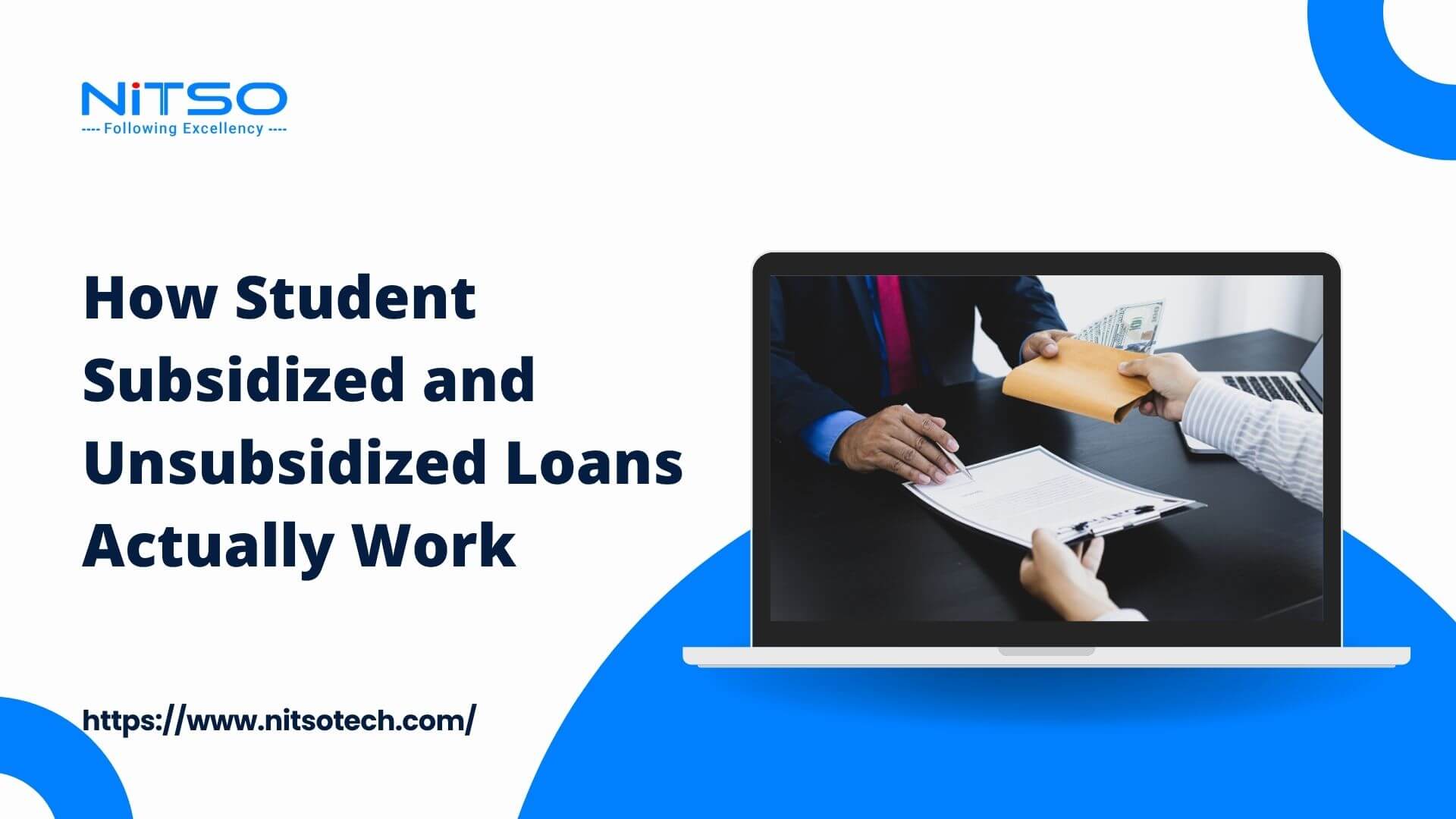Financing higher education is a major concern for many Indian families. With rising costs at technical schools, colleges, and universities, paying these expenses out of pocket can be incredibly challenging. This leads many students to take out student loans to bridge the gap between costs and available family resources or savings. But when it comes time to research loan options, most encounter confusing terminology and acronyms right away. What exactly is the difference between a subsidized vs. unsubsidized loan? And more importantly, how do these differences impact total repayment costs as well as eligibility for the loans in the first place?
In this guide, we’ll break things down in simple terms. You’ll learn what sets subsidized and unsubsidized student loans apart, from how interest accrual differs to what determines eligibility for each type. We’ll also provide plenty of concrete examples so you can see real numerical differences in cost over time. Our goal is to eliminate confusion around loan terminology so you understand your options. Let’s get started!
Table of Contents
Understanding What are Subsidized Loans
Subsidized loans are a type of financial aid that students can use to pay for university or trade school. The key characteristic of subsidized loans is that the government pays the interest on the loan while the student is enrolled and during the grace period. This ultimately lowers the cost of the loan for the borrower.
Student loan interest can really add up over time. For subsidized loans, the government steps in during school and the 6 month post-graduation grace period so the student does not have to bear that financial burden of interest. Students must demonstrate financial need to be eligible for subsidized loans. Subsidized loan options for Indian students include certain national student credit programs run by the Indian government, as well as some state and university loans for students from middle and lower-income families.
The maximum amount of subsidized loans an undergraduate student can borrow each year ranges from ₹ 72,000 to ₹ 145,000 depending on the year in school and dependency status. Loan limits are higher for graduate and professional degree programs. So while the subsidized loan amount may not cover all educational costs, the savings in interest make them an essential part of financial planning for many Indian university students in need.
Understanding What are Unsubsidized Loans
Unlike subsidized loans, the government does not pay interest on unsubsidized loans while the student is enrolled in school. Interest accrues from the date the loan is first disbursed and continues to accrue throughout the student’s enrollment, the grace period, and any periods of authorized deferment or forbearance. The student has the choice to either pay the interest as it accrues or allow it to accumulate and capitalize (be added to the principal loan balance) when repayment begins.
Unsubsidized national student loans are available to all eligible students regardless of financial need. So even students from middle or higher-income families who may not qualify for subsidized loans can still access these unsubsidized government student credit programs. Many banks also offer private unsubsidized education loans with variable interest rates and loan terms set by the lender rather than the government.
Allowing interest to accrue while enrolled and during grace periods leads to the overall debt increasing substantially over time through the effect of compound interest. By one estimate, allowing interest to accumulate and capitalize can mean paying 20-50% more total money over the life of the loan compared to paying interest as it accrues! This is why it is so important for students taking unsubsidized loans to understand the options for managing interest payments before capitalization occurs.
The maximum unsubsidized amounts Indian students can borrow each year are often higher than the limits for subsidized programs. However, to keep costs as low as possible, students should determine their actual needs and borrow responsibly. Unsubsidized loans are an opportunity, but that opportunity must be balanced with the responsibility of managing interest from the start.
Differences Between Subsidized and Unsubsidized Loans
There are some major distinctions between these two primary types of education loans that Indian students need to understand. The key differences can be summarized as:
1. Interest Accrual
- Subsidized: Government pays interest while enrolled and during 6 month grace period
- Unsubsidized: Student responsible for interest from the date loan is disbursed
2. Eligibility
- Subsidized: Based on demonstrated financial need; lower family incomes
- Unsubsidized: Available regardless of financial need; any income level
3. Loan Limits
- Subsidized: Lower annual and aggregate limits based on grade level
- Unsubsidized: Typically higher limits; varies by lender
4. Capitalization of Interest
- Subsidized: No capitalization option since the government pays interest
- Unsubsidized: Choice to pay interest as it accrues or allow it to capitalize
To understand the true cost difference, let’s walk through some numerical examples. Meet Priya, an undergraduate social work major with ₹22,50,000 in total unmet financial need after grants and scholarships are applied to her costs each year.
If Priya takes the maximum subsidized loan amount of ₹4,12,500 per year over four years, she would graduate with ₹16,50,000 in subsidized debt. Because the government paid her interest in school, ₹16,50,000 is the actual amount she owes.
Compare this to Rohan, who comes from a middle income family but doesn’t demonstrate financial need. Rohan can only access ₹5,62,500 yearly in unsubsidized debt. But by letting the interest accrue and capitalize over 4 years, Rohan’s original ₹22,50,000 loan amount turns into ₹27,10,425 owed by graduation day – a difference of over ₹4,60,425 caused by interest capitalization!
The benefits of subsidized interest and lower borrowing limits are clear. All students should evaluate their options, determine actual needs carefully, and always borrow only what is required. Thinking through total costs now rather than later can save thousands over the loan repayment period.
What is Subsidized Loan Interest Rate in India?
The interest rates on subsidized loans in India vary depending on the specific government loan program. Here are some details on interest rates for major subsidized loan programs in India:
- Central Sector Interest Subsidy Scheme (CSIS): The interest rate is based on the rates charged by banks and financial institutions, which is usually around 7-9% based on market rates. The government subsidizes the full interest during moratorium periods.
- Central Sector Interest Subsidy Scheme for Skilling (CSIS-Skilling): 7-9% interest from banks/financial institutions. The government pays the interest during the moratorium to keep it interest free for students.
- Padho Pardesh Scheme for Interest Subsidy on Educational Loans for Overseas Studies: Charged at rates not exceeding 9% per annum. The Interest Subsidy provided will be up to 6.8% to the student on the moratorium period.
- AICTE Scheme for Interest Subsidy on Educational Loans for Skill & Entrepreneurship Development: Max 9% per annum interest charge but govt will subsidize 3% during the course period and the remaining during the moratorium period.
So in summary, most government-subsidized student loan programs in India have maximum loan interest rates in the range of 7-9% per annum. The government subsidizes part or full interest amounts for certain periods to ease costs for students demonstrating financial need.
Which Type of Loan is Right for You?
When developing your financial aid package, carefully weighing the pros and cons of subsidized vs. unsubsidized loans can save you thousands of rupees over time. Here are some key factors Indian students should consider:
1. Financial Need Eligibility
Since subsidized loans are need-based, students must complete paperwork like the FAFSA to determine eligibility. Those from middle and higher-income families likely only qualify for unsubsidized options. Know the income cut-offs for subsidized loan programs.
2. Interest Rates and Terms
Unsubsidized government loans typically have lower fixed rates than private bank loans. Compare all rates and repayment timelines before deciding. The accrual of unsubsidized interest also provides an incentive to minimize borrowing as much as possible.
3. Paying Interest Now vs. Capitalization
It’s tempting to defer interest payments on unsubsidized loans. But doing so causes thousands in unnecessary future payments. If possible, pay unsubsidized interest as it accrues. Even $100 a month makes a difference!
4. Maximize Grants First
Grants and scholarships don’t need to be repaid like loans. So before turning to subsidized or unsubsidized debt, exhaust all options for “free” aid from the university, employers, private foundations, and other sources.
At the end of the day, there are pros and cons to both loan types. There’s no one “right” option for every situation. But informed borrowing is critical – factor total interest costs and loan terms into your decision. And always stick to borrowing only as much as you need so debt after graduation is kept to a minimum no matter which loan types you use!
What Documents Will You Need?
When you apply for subsidized or unsubsidized government student loans, either through national programs or state aid, some key documents are required either to confirm eligibility or loan amounts. Having these ready ahead of time can speed up processing:
1. Identity Proof
Documents like Aadhar cards, PAN cards, driving licenses, or passports act as proof of identification when applying for any type of student aid, including loans.
2. Income Documentation
Since subsidized loans require demonstrating financial need, tax returns or income statements will be requested. Having past years’ returns available is key both for FAFSA filings and other loan application paperwork.
3. Bank Statements
While loans or grants will provide funding for university costs directly, showing some cash reserves or assets may be needed, especially as proof to qualify for private unsubsidized loans. Bank statements over a period of time establish this.
4. University Enrollment Confirmation
As student loans are intended for education costs, confirmation of enrollment and cost of attendance from the university must be provided during the application process, whether for government or private loan programs.
Preparing documents that confirm identity, income status, assets, and university enrollment status ahead of time ensures your loan application packaging moves smoothly without any processing delays. Be sure to save digital or physical copies of anything related to income, taxes, bank accounts, university admittance paperwork, tuition invoices, or student ID cards. These act as critical supporting materials when the time comes to apply for subsidized or unsubsidized Indian student loans.
Key Insights
The world of student loans can quickly become complex and overwhelming. But we hope this breakdown of key differences between subsidized and unsubsidized loans paves the way to informed financial decisions as you embark on your higher education journey.
Remember, every situation is unique when it comes to financial planning for university or trade school. Be sure to speak with financial aid officers at your chosen institution to discuss the different loan programs available, eligibility terms, documents needed to apply, and expected monthly payments after graduation.
With this knowledge in hand, borrow only what is essential, understand all options like paying unsubsidized interest now vs. later, maximize “free” grant money first, and complete all paperwork carefully and accurately. Follow this advice and you’ll be setting yourself up for sustainable loan repayment and financial health for decades to come. Best of luck with your studies!
FAQs
How many subsidized loans can I get in India?
There is no specific limit on the number of subsidized education loans one can avail of in India. However, loan amounts are capped based on course and institution details. Students can get subsidized loans under various central and state government schemes.
How many unsubsidized loans can I get in India?
There is no limit defined by the Indian government. Students can take multiple unsubsidized loans from nationalized banks, private banks, NBFCs etc. based on eligibility and submission of required documents.
Are subsidized loans better and why?
Yes, subsidized loans are generally better because the government pays the interest that accrues while you are in school. This saves you money in the long run compared to unsubsidized loans where you have to pay all interest charges.
Are subsidized loans interest-free in India?
Subsidized loans are interest-free while you are enrolled at least half-time and during grace periods. The government pays the interest instead of it being added to your loan balance. Once in repayment, interest starts accruing.
Are unsubsidized loans interest-free?
No, you are responsible for paying all interest charges on unsubsidized loans, even while enrolled. You can either pay the interest every month or let it get added to your loan principal.
Are subsidized loans direct loans?
No, subsidized education loans in India are not offered as direct loans from the government. However, certain government schemes provide interest subsidies on loans from approved banks and financial institutions.
For example, under the Central Sector Interest Subsidy Scheme (CSIS), students can avail an education loan with an interest rate of 7-9% from designated banks. The government will then reimburse the difference between the final interest rate charged to the student and the base rate set under the scheme.
So while the loan is taken from a private bank, the government subsidizes a portion of the interest through direct subsidies paid to the lender. This helps reduce the effective interest rate for eligible students.
How are subsidized loans disbursed?
Funds are sent to your university and first applied to tuition, fees, room, board and other authorized charges. Any excess funds are paid to you for other education expenses. Loans are disbursed at the start of each college term.
How to accept unsubsidized loans?
To accept an unsubsidized loan, you must sign a master promissory note (MPN) agreeing to repay the loan per the loan terms and conditions. The loan amount will disburse to your university account but you are responsible for interest from the date of disbursement.
How do direct unsubsidized loans work?
Direct unsubsidized loans are available regardless of financial need. Interest starts building as soon as the loan is first paid out, including while enrolled. You can opt to make interest payments during school or let it be capitalized into the principal when you graduate or drop below half-time.








0 Comments